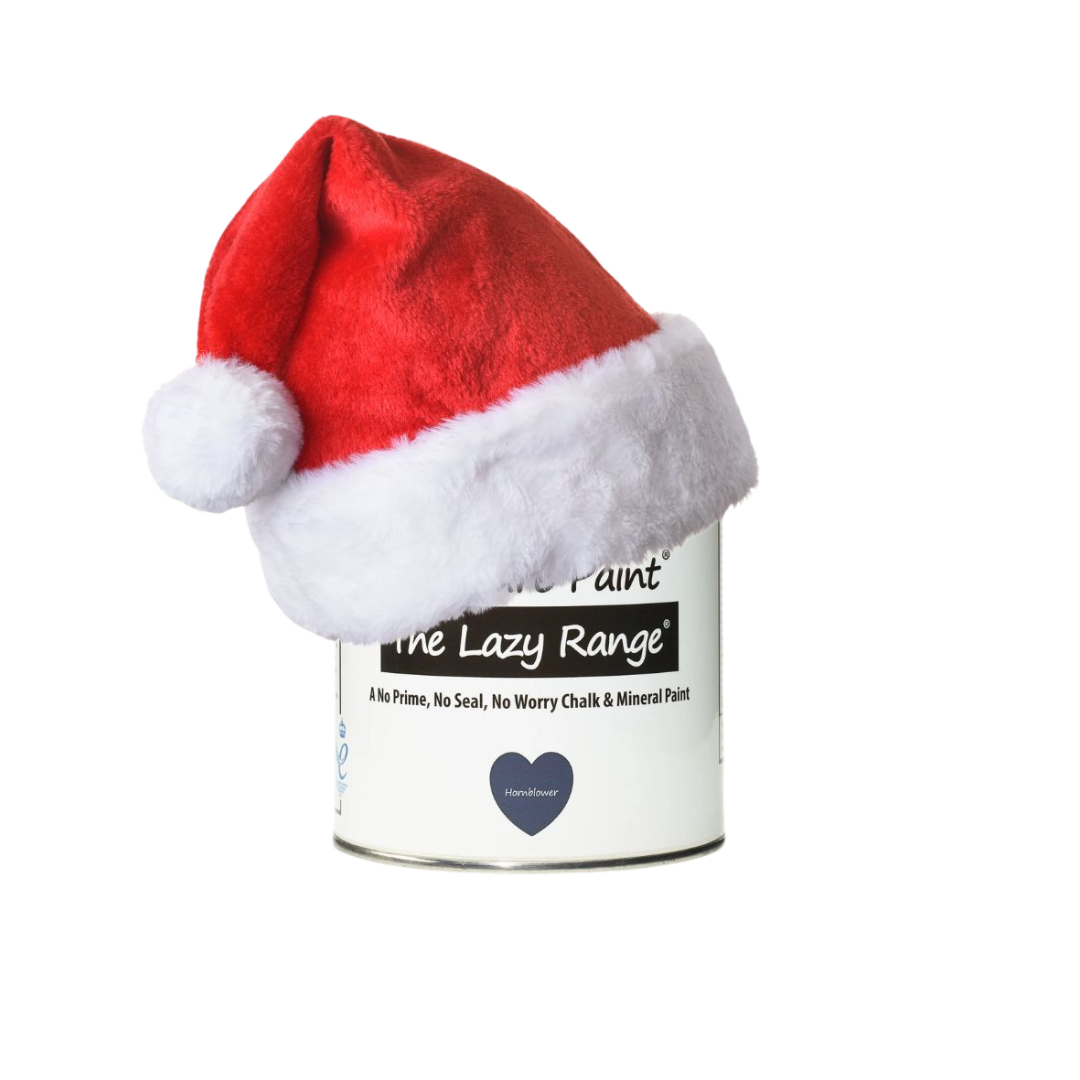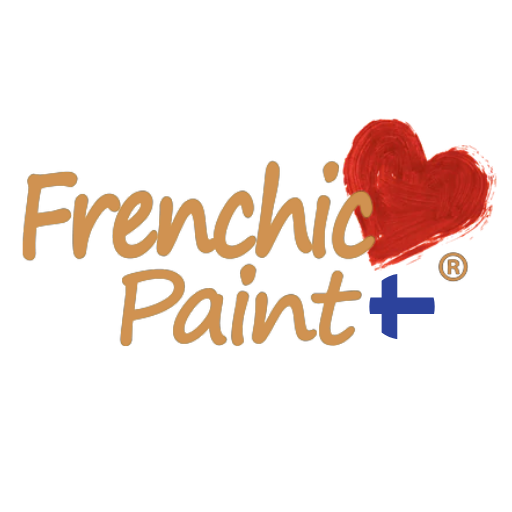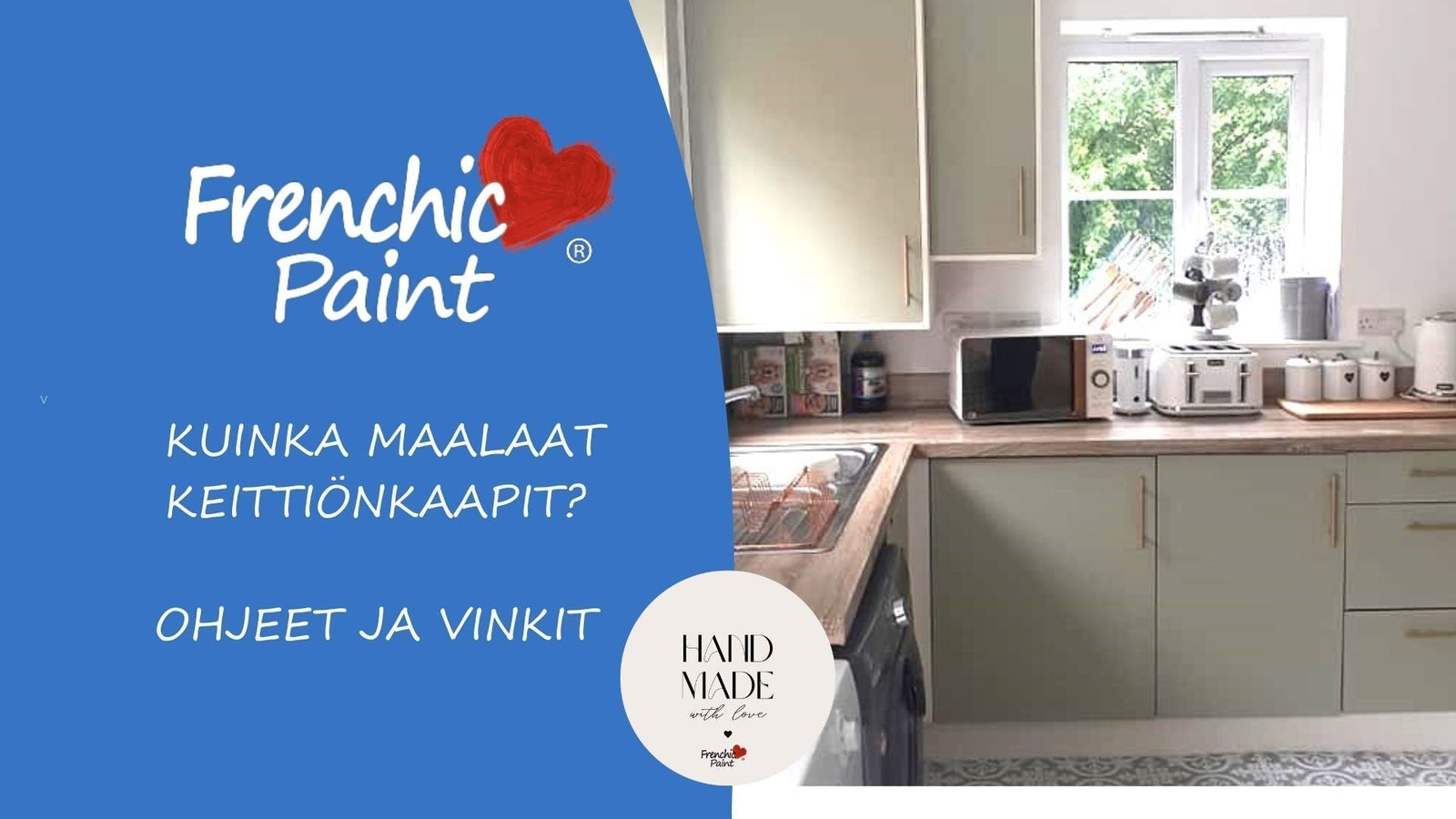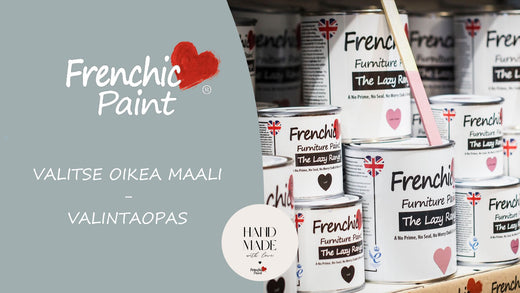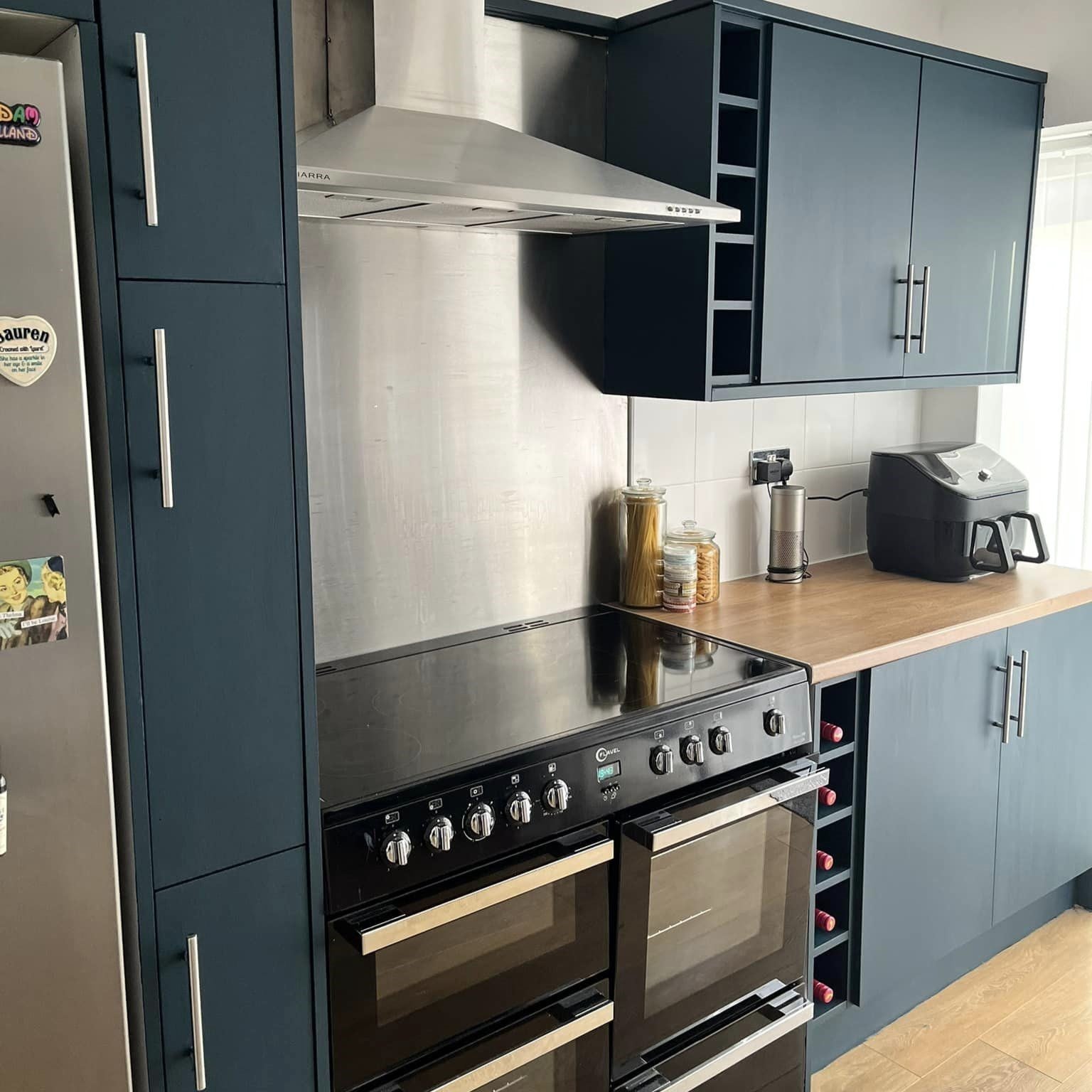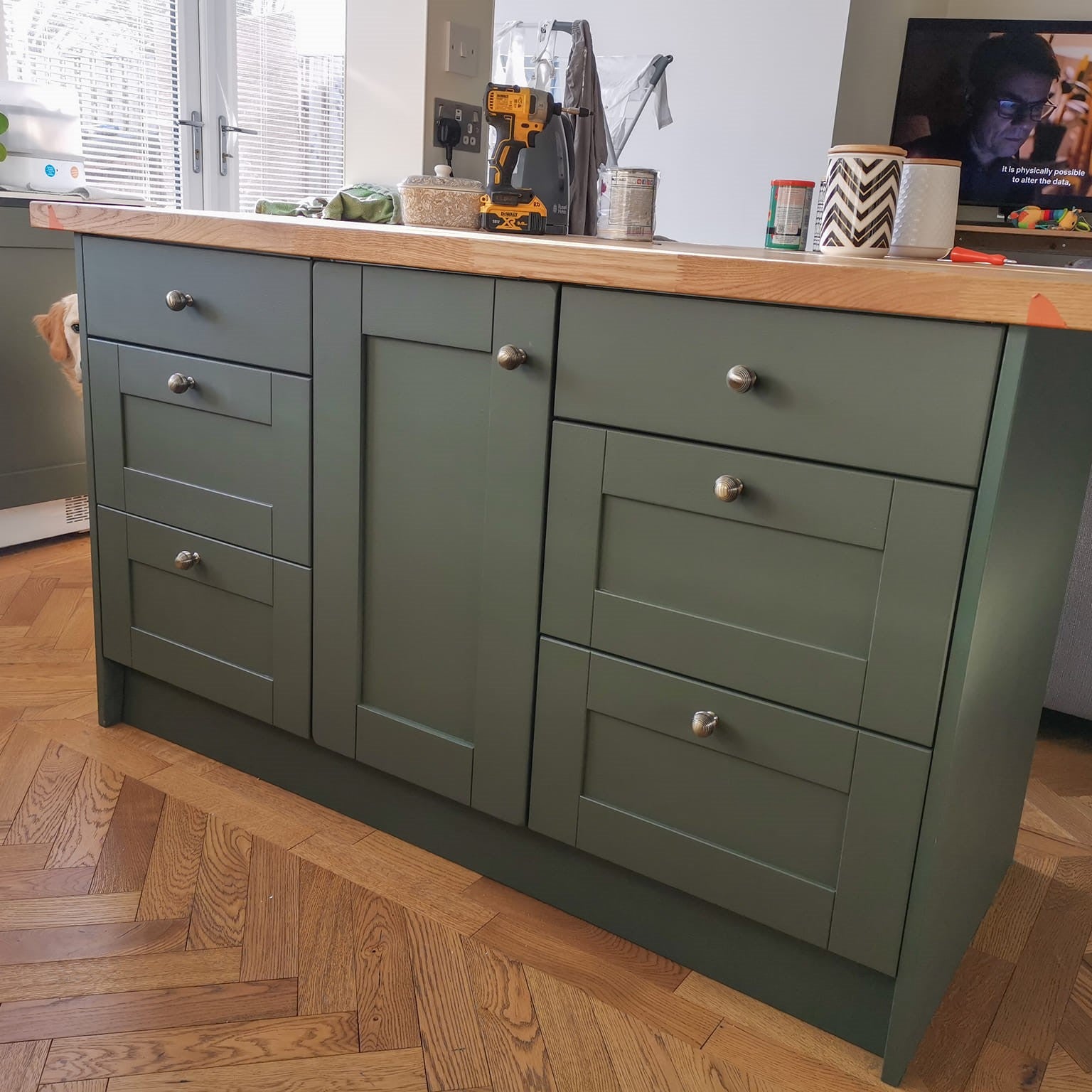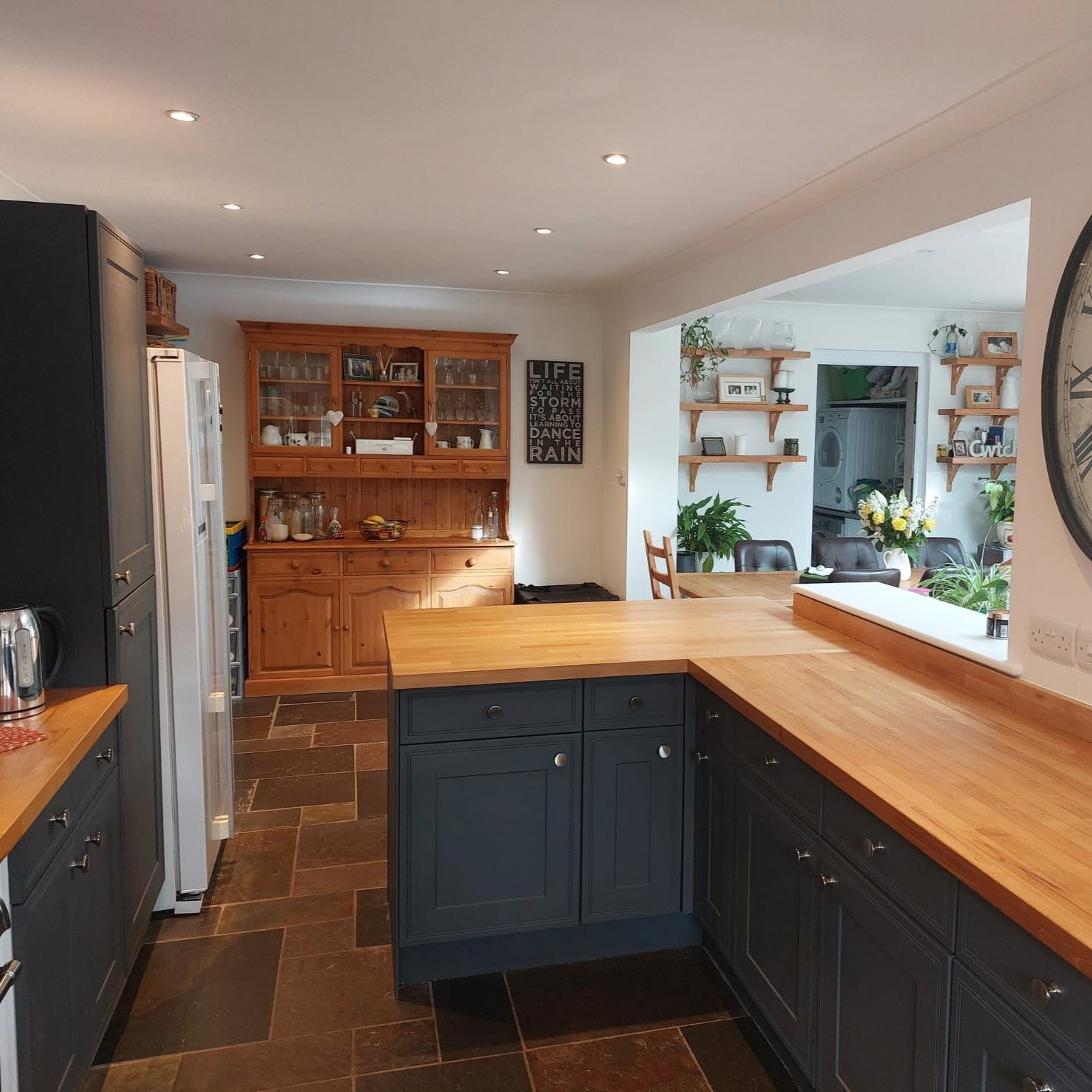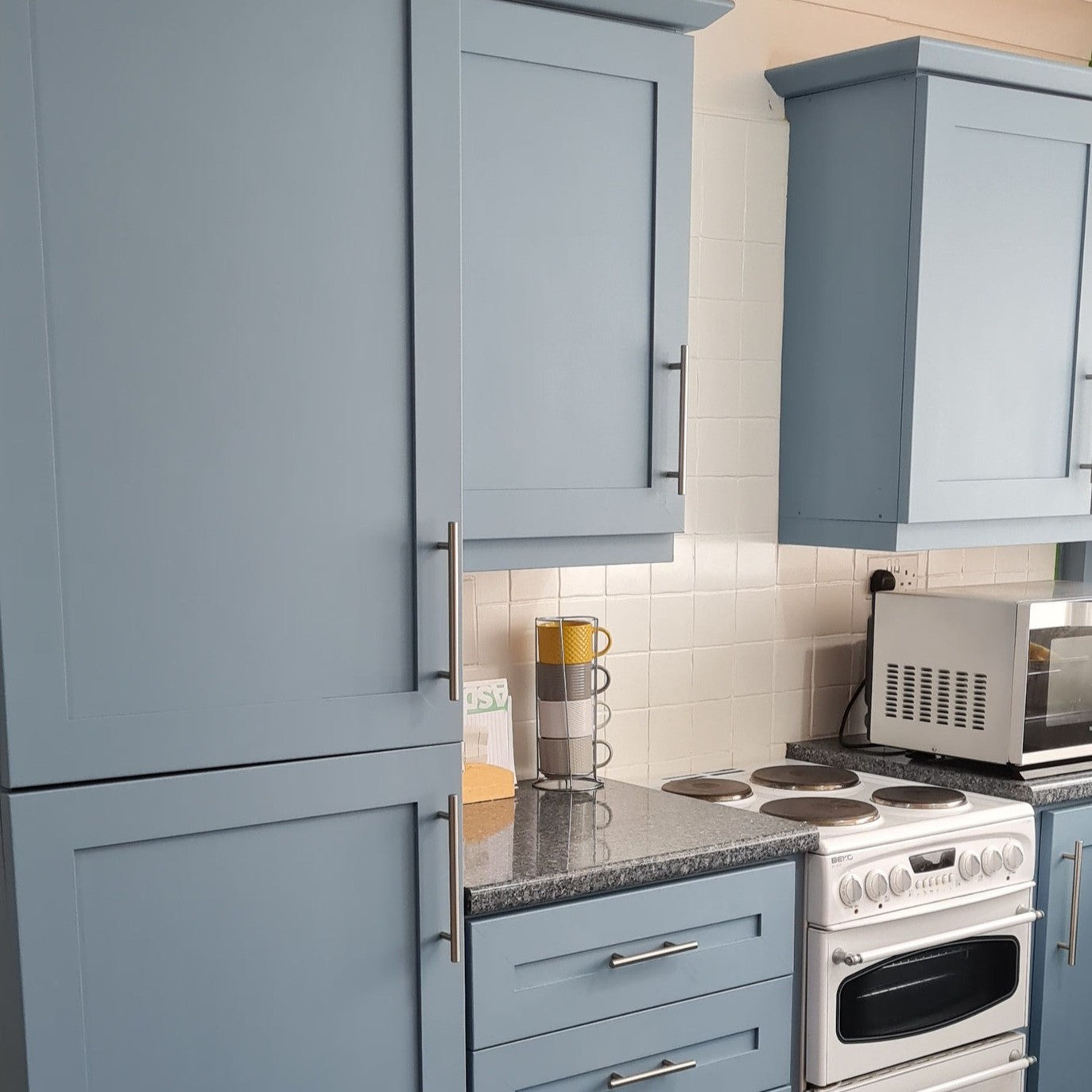Hur man målar keramiska kakel

Kan du måla kakel med Frenchic-färg?
Ja, de flesta keramiska väggkakel kan målas. Undantag är golvkakel samt områden som utsätts för stillastående vatten eller varm ånga, såsom bastur och bakom spisar.
Keramiska kakel kan målas med Chalk Wall Paint Al Fresco– och Seinämaali-seriens färger. Se videotipsen i slutet av bloggen.
Tänk dock på dina egna användningsvanor och områdets slitage. Att måla kakel är ett enkelt och prisvärt sätt att förnya utseendet, men underhållsbehovet bör beaktas i förväg.
Det är lättare än du tror – följ bara våra instruktioner
Kaklet på bilden nedan är målat med den mörkgrå Smudge-nyansen (Al Fresco-serien). För att skydda målarytan från varm ånga har en klar glasskiva monterats i bakgrunden.

Bild: kakel Smudge, Al Fresco. Skåp: Swankypants, Al Fresco.
Keramiska kakel – ett hållbart och populärt ytmaterial
Kakel ger en vattentålig yta för kök och badrum. Med tiden kan färger och mönster dock kännas föråldrade – då är målning ett enkelt sätt att uppdatera stilen.
Varför måla kakel?
Ofta beror det på utseendet. Gamla kakel kan vara slitna eller ha en omodern färg. Målning erbjuder ett fräscht och prisvärt alternativ till att byta kakel.
Att ta bort kakel är arbetsamt och dyrt. Genom att måla kan du spara både tid och pengar och enkelt få ett nytt utseende.

Så här målar du keramiska kakel
- Rengör ytan noggrant och skölj bort rengöringsmedelsrester.
- Slipa lätt och torka bort dammet.
- Måla minst två gånger. Låt första lagret torka i cirka 2 timmar innan du målar andra lagret.
- Behandla ytan försiktigt i 2–3 veckor tills färgen är helt härdad.
Rengöring: Använd ett milt rengöringsmedel. Undvik slipande verktyg, ångtvätt och starka kemikalier.
Välj rätt färg – Al Fresco eller Seinämaali
Kakel kan målas antingen med Seinämaalisarjan eller Al Fresco-seriens färger.
- Väggfärgen har en ultramatt yta.
- Al Fresco är halvmatte och finns i mindre förpackningar (250–750 ml).
Ytbehandling är ett viktigt steg
Förarbetet är avgörande för ett lyckat slutresultat. Rengör, torka och rugga ytan lätt före målning. Byt vid behov ut gamla silikonfogarna mot nya.
Skölj bort alla rengöringsmedel noggrant – rengöringsmedelsfilm hindrar färgens vidhäftning. Använd endast produkter från en tillverkare för hela projektet.
Eftervård av målade plattor
Låt färgytan härda i cirka tre veckor innan normal användning. Blöt inte ytan under den första veckan. Rengör försiktigt därefter och undvik slipning.
Inspiration för målning av plattor
Al Fresco- och Chalk Wall Paint-serierna har många färger. Du kan välja till exempel modern grå, djärv grön eller klassisk vit. Även färgväxling eller metallglansiga fogar ger effektfullhet.

Bild: Kopparfärgad Frensheen i plattfogarna.
Tvätt och förarbete före målning
Rengör ytor från mögel, smuts och fett med Frenchic Sugar Soap-rengöringsmedel och skölj noggrant.
Silikonfogarna och tätningarna
Måla inte silikonfogarna – byt ut dem mot nya. Slipa plattan lätt så att färgen fäster. Använd tejp av hög kvalitet för avgränsningar.
Måla lätt med pensel eller roller
En liten roller passar för stora ytor och pensel för hörn. Rör om färgen väl före användning. Läs tips för val av pensel.
Ta hand om den målade ytan varsamt
Använd milda rengöringsmedel och undvik slipning samt ångtvätt. Repor kan repareras med underhållsmålning.
Avsätt tid för projektet och gör ett testmåleri
Låt färgen torka ostört i 48 timmar innan lätt användning och behandla försiktigt i cirka tre veckor. Testa nyansen i förväg med en provburk.
Var Al Fresco och Seinämaali inte passar
Färger rekommenderas inte för områden med stillastående vatten (badkar, duschar, handfat, bastur), platser som utsätts för hög värme eller fukt, eller för golvplattor. Färger fungerar inte som vattentätning.
Målning av golvplattor – på egen risk
Officiellt rekommenderas inte målning av golvplattor, men kunder har lyckats med det i utrymmen med lätt slitage. Bedöm alltid användning och slitage för platsen.
- Se videon med finsk text om förberedelser.
- Var försiktig när du öppnar burkens lock – vi rekommenderar att använda Frenchic-målarburksöppnare.
- Rör om färgen noggrant från botten med ett brett verktyg före och under målningsprojektet.
Målning, färgtorkning och härdning
- Undvik målning i direkt, het solsken.
- Den bästa målningsluften är när luft- och yttemperaturen är 10–32 °C och luftfuktigheten under 85 %.
- Undvik målning utomhus om det väntas regn, frost, dimma eller kondens under de följande 48 timmarna, eller om temperaturen kan sjunka under 10 grader.
- Speciellt träytor kan behålla fukt upp till 48 timmar efter regn eller tvätt.
- Se till att ytan som ska målas är helt torr innan målning.
- Måla utomhus endast möbler som du kan förvara skyddade från väder och vind under vintern. Läs i vår blogg hur du lyckas med utomhusmålning.
- Använd endast rena och högkvalitativa verktyg för målning, som pensel eller roller.
- Passar även för sprutmålning – tunna ut med 10–15 % rent vatten beroende på utrustning.
- Låt färgen jämna ut sig i lugn och ro och låt "Self Levelling"-egenskapen verka – undvik att bearbeta färgen för mycket.
- Det ska gå minst 2 timmar mellan lagren, även om färgen känns torr vid beröring.
- Målarytan når sin slutliga hårdhet inom 2–3 veckor under normala förhållanden. Behandla ytorna varsamt tills härdningen är klar.
- Undvik att repa och gå på det nymålade golvet i minst 4 timmar. Gå barfota under de följande 7 dagarna och håll husdjur borta från ytan. Blöt inte ytan under den första veckan och behandla den försiktigt i cirka tre veckor. Använd milda rengöringsmedel och repfria rengöringsverktyg framöver.
Förvaring och rengöring
- Stäng målarburken tätt efter användning.
- Skydda färgburken utomhusmålning från barr, pollen och skräp.
- Rengör stänk omedelbart med varmt vatten.
- Tvätta penslar i varmt tvålvattnet direkt efter användning.
- Förvara inte färgburkar i fuktiga, varma eller frostutsatta utrymmen.
Instruktioner för val av nyans
- Vi strävar efter så exakt färgåtergivning som möjligt på våra sidor, men nyanser kan variera beroende på enhetsinställningar, belysning och ytkonstruktion. Det bästa sättet att välja nyans är att besöka en Frenchic-återförsäljare eller beställa en 250 ml provburk och prova färgen hemma.
-
- Avsätt tillräckligt med färg för hela projektet. Om du använder flera burkar, se till att de är från samma tillverkningsbatch (batchnummer) eller blanda innehållet i burkarna innan målning.
- Ett tunt lager eller utspädd färg kan försämra hållbarheten.
- Porösa och ojämna ytor (t.ex. MDF, glasfibertapet, flätad yta, råplanka) förbrukar mer färg. Alla Frenchic-färger appliceras minst två gånger.
- Granska nyansen först när den är torr efter två lager. Färgens intryck ändras beroende på belysning och intilliggande nyanser, samt på olika ytor (horisontellt vs. vertikalt).
- Täthet, färgåtergivning och täckförmåga påverkas också av färgens blandning och grundfärgens nyans.
